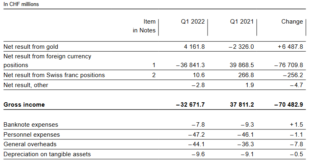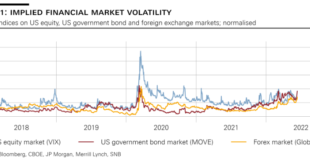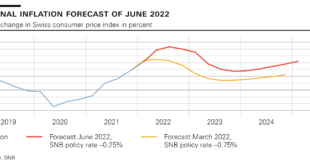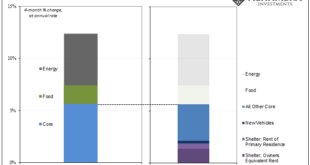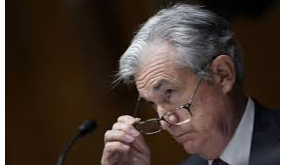In my remarks today, I will present the key findings from the new Financial Stability Report, published this morning by the Swiss National Bank. Economic environment In the period between the publication of the last Financial Stability Report and the end of 2021, economic and financial conditions for the Swiss banking system remained favourable. GDP has returned to, or even exceeded, pre-crisis levels in most countries and unemployment rates have receded globally....
Read More »Тhomas Jordan: Introductory remarks, news conference
Ladies and gentlemen It is my pleasure to welcome you to the Swiss National Bank’s news conference. In my remarks, I will begin by explaining our monetary policy decision and our assessment of the economic situation. After that, Fritz Zurbrügg will present the key messages from this year’s Financial Stability Report. Andréa Maechler will then comment on the situation on the financial markets and the implementation of monetary policy. We will – as ever – be pleased to...
Read More »Andréa M. Maechler: Introductory remarks, news conference
I will begin my remarks with a review of developments on the financial markets over the past half-year. I would then like to discuss the lowering of the threshold factor mentioned by Thomas Jordan. Situation on the financial markets Volatility on the financial markets has increased again significantly since the beginning of the year (cf. chart 1). This was driven by the sharp rise in inflation abroad and by attendant expectations regarding a speedier tightening of...
Read More »SNB Monetary policy assessment of June 2022
Swiss National Bank tightens monetary policy and raises SNB policy rate to −0.25% The SNB is tightening its monetary policy and is raising the SNB policy rate and the interest rate on sight deposits at the SNB by half a percentage point to −0.25% to counter increased inflationary pressure. The tighter monetary policy is aimed at preventing inflation from spreading more broadly to goods and services in Switzerland. It cannot be ruled out that further increases in the...
Read More »Swiss lower economic growth forecasts due to war and inflation
SECO lowered this year’s GDP growth forecast from 2.8% (in March) to 2.6%. © Keystone / Gaetan Bally The Swiss Secretariat for Economic Affairs (SECO) has downgraded its economic growth forecast for 2022 to 2.6% due to the war in Ukraine and uncertainties in China. “The Swiss economy made a solid start to the year, but prospects for the international environment have waned,” SECO saidExternal link on Wednesday. “In particular, the global economy is at risk from the...
Read More »Bribe Money for Ukrainian Officials?
In my blog post of May 18, 2022, I raised the possibility that the $40 billion aid package that Congress quickly approved for Ukraine was going to be used, at least in part, to pay multimillion dollar bribes to Ukrainian officials. After all, why else would the members of Congress, as well as the Pentagon’s assets within the mainstream press, react so vociferously against the idea of having the Inspector General monitor how the money is being used? And what better...
Read More »Ukraine war forces Swiss business to make choices on neutrality
Zurich’s Kunsthaus, where the Bührle collection is a reminder of the moral hazards of neutrality. © Keystone / Walter Bieri Sanctions imposed on Russia have focused debate over the country’s long-cherished economic haven status. In the gleaming new Chipperfield extension of the Zurich Kunsthaus, all polished limestone and gold, is a room dedicated to expiating the moral debits of economic neutrality. The Bührle collection is one of the greatest privately-amassed...
Read More »Even When There Is Inflation, the Fed STILL Fights Falling Prices
Under any remotely sound money regime the aftermath of war and/or pandemic is highly likely to feature a sharp decline in the prices of goods and services on average. Even under unsound money regimes there are powerful forces operating towards lower prices once the war/pandemic recedes. Strong injections of monetary inflation, however, can overpower them. The Fed and all the foreign central banks which follow its lead and/or doctrines are apparently of the intention...
Read More »Curve Inversion 101: US CPI Politics Up Front, China PPI Down(ing) The Back
While the world fixated on the US CPI, it was other “inflation” data from across the Pacific that is telling the real economic story. Having conflated the former with a red-hot economy, the fact American consumer prices aren’t tied to the actual economic situation has been lost in the shuffle of the FOMC’s hawkishness, with markets obliged to price wrong-way Jay. The short end of the yield curve (USTs and elsewhere) is plotting like FOMC dots, whenever oil and crude...
Read More »Is a 0.3% Miss on Headline CPI Really Worth a 77 bp Rise in the December Fed Funds Yield?
Overview: Better than expected Chinese data and an unscheduled ECB meeting are the highlights ahead of the North American session that features the May US retail sales report and other high frequency data before the outcome of the FOMC meeting. Asia Pacific equities outside of Hong Kong and China fell. Europe’s Stoxx 600 is up almost 1% as it tries to snap a six-day slide. US futures are posting modest gains. Bond markets in Europe and the US are rallying. The ECB...
Read More »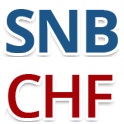 SNB & CHF
SNB & CHF

